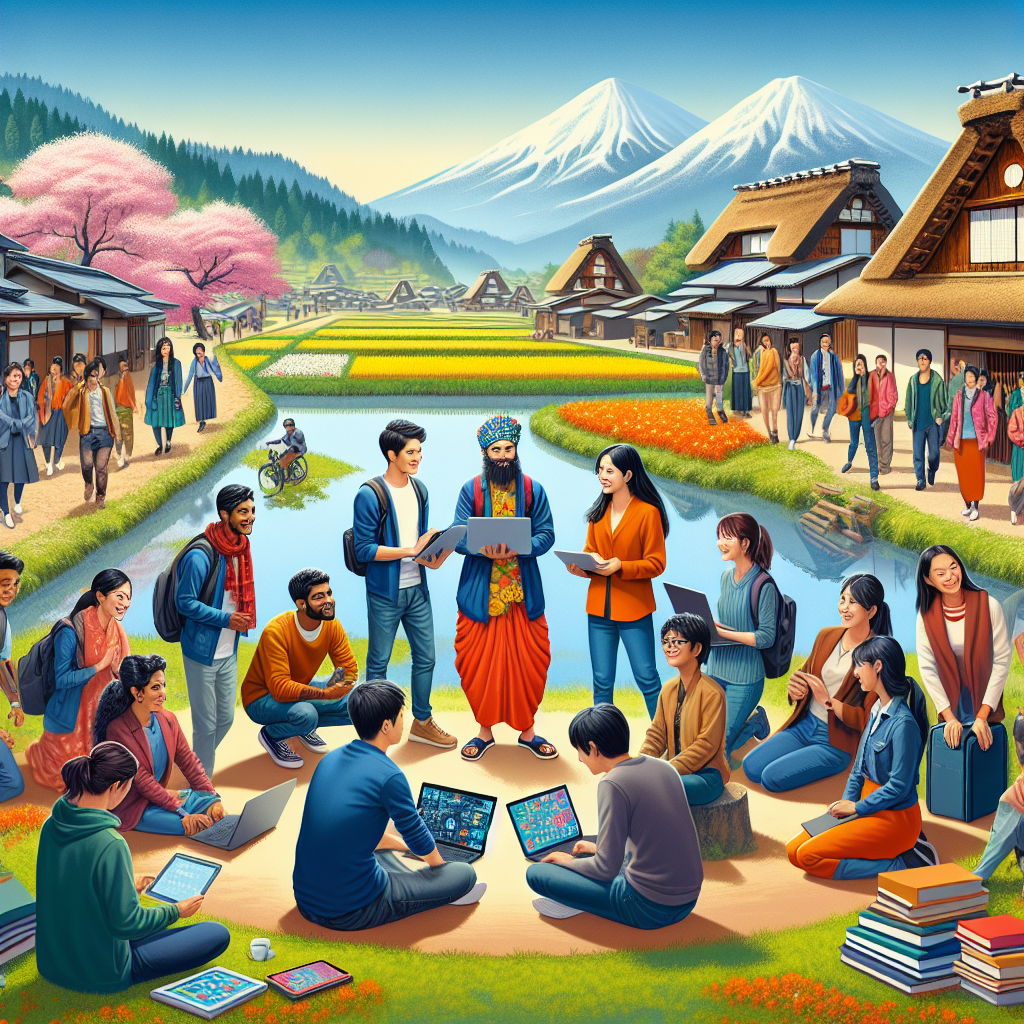2

How Indian Students Are Changing the Face of Rural Japan
In an era where urbanization is causing rural communities worldwide to wither, Japan has turned to a surprising ally in its quest for regional revitalization: Indian students. These young scholars are seen not merely as students, but as catalysts for change in Japan's aging countryside. Leveraging their talents in technology and innovation, Indian students are initiating projects that breathe new life into rural economies. As universities and local governments forge new partnerships, the influx of Indian students represents a unique blend of globalization and cultural exchange, which is crucial for sustainable development in Japan’s remote areas.
The Need for Revitalization in Japan’s Countryside
Japan's rural areas are in crisis, grappling with an aging population and diminishing workforce. Villages are emptying out as younger generations flock to urban areas for better opportunities, leaving behind a demographic time bomb of older residents and declining birth rates. This situation not only threatens the cultural heritage of these regions but also their economic viability. **The need for revitalization is more urgent than ever**, prompting government officials to explore novel solutions that involve international cooperation. Enter Indian students—bright, innovative, and eager to make a difference.
Why Indian Students Are the Perfect Fit
India produces a staggering number of engineers and technology graduates each year, making its students ideal candidates for tackling the technological needs of modern societies. Their expertise aligns perfectly with Japan's need for innovation and modern infrastructure in its rural regions. **Indian students bring a fresh perspective** on technology, entrepreneurship, and community engagement, which are essential elements for revitalizing Japan's countryside. These students are not solely focused on their studies; they are committed to understanding local challenges and deploying their skills to create sustainable solutions.
The Role of Academia and Government
Japanese universities, in collaboration with local governments, are at the forefront of this transformational initiative. Programs are established to encourage **cross-cultural exchanges and collaborations** between Indian students and their Japanese peers. These initiatives aim to harness the dynamism of Indian students and integrate them into the heart of rural communities. Financial and academic support is extended to ensure that these students can succeed and fully immerse themselves in the challenges of rural Japan. Additionally, **policy incentives** are being put in place to encourage more Indian nationals to seek education and employment opportunities in these regions.
Cultural Exchange and Mutual Benefit
Beyond economic interests, there is a deeper cultural exchange occurring. Indian students bring with them a rich tapestry of cultural practices and viewpoints that enrich local communities. Learning goes both ways, with Japanese students and residents gaining exposure to Indian customs and ideologies, resulting in a **mutually beneficial cultural dialogue**. This melting pot of ideas and traditions fosters an environment ripe for innovation and creativity, essential ingredients for revitalization. It's a synergistic relationship where both cultures help each other grow and adapt to the challenges of the 21st century.
The Road Ahead: Future Opportunities and Challenges
Though this initiative shows great potential, challenges remain. Cultural and language barriers, visa regulations, and employment restrictions can impede the seamless integration of Indian students into rural Japanese life. Nonetheless, the focus on continuous dialogue and policy refinement promises to address these hurdles effectively. **With time, patience, and commitment**, Indian students could prove to be a vital asset in not only revitalizing rural Japan but also in forging stronger academic and economic ties between India and Japan.
Moving forward, the success of this initiative could serve as a robust model for other countries facing similar challenges with rural depopulation. By leveraging global talent for local development, a blueprint will emerge for sustainable, innovative, and culturally rich growth. The involvement of Indian students is already creating waves, setting a promising precedent for future international educational and economic partnerships.
Source: Original News Article
```


